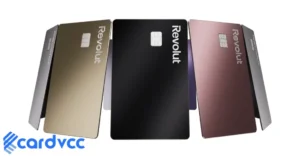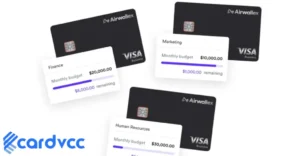Credit card charge fees to customers cover processing costs and merchant services. These fees vary by provider and transaction type.

Credit card fees impact both merchants and customers. Merchants often pass these costs to customers through surcharges or higher prices. Understanding these fees helps consumers make informed payment choices and manage expenses. Common fees include transaction fees, annual fees, and foreign transaction fees.
Transaction fees are typically a percentage of the purchase amount, while annual fees are fixed charges for using the card. Foreign transaction fees apply to purchases made outside your home country. Being aware of these charges can help you minimize costs and use your credit card more effectively. Always read your credit card agreement to understand all applicable fees.
Introduction To Credit Card Fees
Credit card fees are charges imposed by credit card companies. They are essential for maintaining the credit card system. Understanding these fees helps you manage your finances better.
Purpose Of Fees
Credit card fees serve various purposes. They help companies cover operational costs. Fees also act as deterrents to irresponsible spending.
Here are some common purposes:
- Covering transaction processing costs
- Managing risk and fraud
- Generating revenue for the company
Types Of Fees
Credit card fees come in different types. Knowing them can help you avoid unnecessary costs.
| Fee Type | Description |
|---|---|
| Annual Fee | This is a yearly charge for using the card. |
| Late Payment Fee | This fee applies if you miss a payment deadline. |
| Balance Transfer Fee | This fee applies when you transfer a balance from another card. |
| Cash Advance Fee | This fee applies when you withdraw cash using the card. |
| Foreign Transaction Fee | This fee applies to transactions made in foreign currencies. |
Some fees are avoidable. Others are fixed and non-negotiable. Understanding these fees helps you choose the right credit card.
Annual Fees
Credit card annual fees can surprise many customers. These fees can range from $0 to several hundred dollars each year. Understanding these fees helps you make better financial decisions.
What They Cover
Annual fees often cover various benefits and services. These include:
- Rewards Programs: Earn points, miles, or cash back.
- Travel Perks: Access to airport lounges and travel insurance.
- Exclusive Offers: Special discounts and early access to events.
- Customer Service: 24/7 support and fraud protection.
Each credit card offers different perks. Always read the fine print to know what you are paying for.
How To Avoid Them
There are several ways to avoid paying annual fees:
- Choose No-Fee Cards: Many cards offer no annual fees.
- Negotiate with Your Bank: Sometimes, banks waive fees for loyal customers.
- Use Your Card Frequently: Some cards waive fees if you spend a certain amount.
- Leverage Introductory Offers: Look for cards with first-year free promotions.
Avoiding annual fees can save you money. Make sure to compare different cards before making a choice.
Interest Charges
Interest charges are the fees you pay for borrowing money on your credit card. These charges can add up quickly if you carry a balance. Knowing how interest works helps you save money and manage your debt better.
How Interest Is Calculated
Credit card interest is calculated based on your Annual Percentage Rate (APR). This rate is divided by 365 to get a daily rate. The daily rate is then multiplied by your daily balance. Finally, the sum of these daily charges is your monthly interest.
| Step | Calculation |
|---|---|
| 1. Find Daily Rate | APR / 365 |
| 2. Daily Interest | Daily Rate x Daily Balance |
| 3. Monthly Interest | The sum of Daily Interest |
Reducing Interest Costs
You can reduce interest costs by following some simple steps. Pay your balance in full each month to avoid interest charges. If this is not possible, aim to pay more than the minimum payment.
- Pay balance in full
- Make payments on time
- Pay more than the minimum
Another way to reduce interest is by finding a card with a lower APR. You might also consider balance transfer offers. These offers often have 0% interest rates for a limited time.
- Find a lower APR card
- Consider balance transfer offers
Monitor your spending to avoid accumulating large balances. Use budgeting tools to track your expenses.
Late Payment Fees
Credit card charge fees can impact your financial health. One significant fee is the Late Payment Fee. Late payment fees occur when you miss your payment deadline. These fees can accumulate quickly and harm your credit score.
Consequences Of Late Payments
Late payments can lead to severe consequences. Here are some key points:
- Higher Interest Rates: Missed payments can increase your APR.
- Credit Score Impact: Your credit score may drop.
- Penalty Fees: You will incur additional fees.
- Reduced Credit Limit: Your credit limit might decrease.
- Negative Reporting: Late payments are reported to credit bureaus.
| Consequence | Impact |
|---|---|
| Higher Interest Rates | Increases monthly payments |
| Credit Score Drop | Harder to get loans |
| Penalty Fees | More money owed |
| Reduced Credit Limit | Less available credit |
| Negative Reporting | Stays on record for years |
Strategies To Avoid
Avoiding late payment fees is possible with some strategies. Consider these tips:
- Set Reminders: Use calendar alerts for due dates.
- Enroll in Auto-Pay: Automate payments to avoid missing deadlines.
- Pay Early: Make payments as soon as you receive your bill.
- Monitor Your Accounts: Regularly check your account status.
- Contact Your Issuer: Inform your issuer if you face payment issues.
Following these strategies can save you from unnecessary fees. Staying proactive ensures your financial health remains intact.
Balance Transfer Fees
Balance transfer fees are charges applied when moving debt from one credit card to another. This can help manage high-interest debt. But, it’s important to understand the fees involved.
When To Consider
Consider a balance transfer when your current interest rate is high. Transferring can reduce your overall debt costs. But, balance transfer fees vary between credit card issuers.
- High-interest debt
- Improved credit score
- Low introductory rates
Look for cards with low balance transfer fees. Some cards offer 0% introductory rates. But, ensure you understand the terms.
Potential Savings
Balance transfers can offer significant savings. Use a table to compare potential savings:
| Current Credit Card | New Credit Card | Interest Rate | Balance Transfer Fee | Potential Savings |
|---|---|---|---|---|
| Card A | Card B | 18% | 3% | $200 |
| Card X | Card Y | 22% | 2% | $300 |
Evaluate potential savings by comparing interest rates and fees. This helps in making an informed decision.
Remember, balance transfer fees can impact overall savings. Always read the fine print. Check for any hidden costs or conditions.

Using Virtual Credit Cards to Guard Against Cyber Fraudulent Activities
In today’s digital age, online security is paramount. Cyber fraud is a growing concern for many. One effective way to protect yourself is by using virtual credit cards. This article will explore the benefits of virtual credit cards and how they can guard against cyber fraudulent activities.
What are Virtual Credit Cards?
Virtual credit cards are digital versions of traditional credit cards. They have unique card numbers, expiration dates, and security codes. These details differ from your actual credit card. You use them for online purchases, keeping your real card information safe.
Upsides of Virtual Credit Innovations
Virtual credit cards come with many benefits. Let’s look at some of them:
- Enhanced Security: Virtual cards offer enhanced security. They protect your real card details.
- Limited Use: You can set limits on virtual cards. This includes spending limits and time limits.
- Easy Management: Managing virtual cards is simple. You can create and delete them as needed.
- Privacy Protection: Virtual cards protect your personal information. They prevent it from being exposed online.
- Reduced Fraud Risk: Using virtual cards reduces the risk of fraud. Hackers can’t access your real card details.
How Virtual Credit Cards Work
Using virtual credit cards is simple. Here’s how they work:
- Create a Virtual Card: Sign up with a provider like Cardvcc. Instantly create virtual credit cards.
- Get Unique Details: Each virtual card has unique details. This includes a card number, expiration date, and security code.
- Make Online Purchases: Use these details for online transactions. Your real card information stays hidden.
- Set Limits: You can set spending and time limits. This ensures the card is used only as intended.
- Delete the Card: Once used, you can delete the virtual card. This renders the details useless to anyone else.
Steps to Get Started with Virtual Credit Cards
Ready to start using virtual credit cards? Follow these steps:
- Choose a Provider: Select a virtual credit card provider. Cardvcc is a great option.
- Sign Up: Register for an account with your chosen provider.
- Create a Card: Use the platform to create a virtual card. Enter any required details.
- Set Preferences: Set your spending and time limits. Customize the card as needed.
- Use the Card: Use the virtual card details for online purchases. Enjoy enhanced security and peace of mind.
Why Choose Cardvcc?
Cardvcc is a top choice for virtual credit cards. Here’s why:
- Instant Creation: Create virtual credit cards instantly.
- User-Friendly Interface: The platform is easy to use. Even beginners can navigate it with ease.
- Customizable Options: Set spending and time limits to suit your needs.
- Enhanced Security: Cardvcc prioritizes your security. Your real card details are kept safe.
- Excellent Support: Cardvcc offers great customer support. Help is available when you need it.
Virtual credit cards are a powerful tool against cyber fraud. They offer enhanced security, privacy protection, and ease of use. Providers like Cardvcc make it easy to create and manage virtual cards. Start using virtual credit cards today. Protect your financial information from cyber threats.
Foreign Transaction Fees
Traveling abroad is exciting but can come with unexpected expenses. One such cost is the foreign transaction fee. These fees can surprise you on your credit card bill. They occur when you purchase in a foreign currency or country. Understanding these fees can help you save money while traveling.
Understanding Currency Conversion
When you use your credit card abroad, the currency needs to be converted. This conversion often incurs a fee. Banks charge a percentage of the transaction amount. This fee usually ranges from 1% to 3%.
For example, if you spend $100 in Europe, you might pay an extra $3. This might not seem like much but adds up over time. Be aware of these charges to manage your travel budget better.
Some cards also charge a flat fee per transaction. Check your card’s terms and conditions. Knowing these details helps you avoid surprises.
Travel-friendly Cards
Some credit cards are designed for travelers. They do not charge foreign transaction fees. These cards can save you a lot of money. Look for cards that offer this benefit.
Here is a comparison of some popular travel-friendly cards:
| Card Name | Foreign Transaction Fee | Other Benefits |
|---|---|---|
| Chase Sapphire Preferred | None | Travel rewards, purchase protection |
| Capital One Venture Rewards | None | Miles on every purchase, travel insurance |
| American Express Gold | None | Dining rewards, rental car insurance |
Choosing a travel-friendly card can enhance your travel experience. You can avoid extra fees and enjoy additional perks. Always read the fine print before applying.
Here are some tips to consider:
- Check if your card offers no foreign transaction fees.
- Compare benefits like travel insurance and rewards.
- Ensure the card is widely accepted in your destination.
A travel-friendly card can make your trip more enjoyable. Save money and gain valuable rewards.
Cash Advance Fees
Credit card cash advance fees can be costly. These fees apply when you withdraw cash using your credit card. Understanding these fees is crucial to managing your finances better.
How Cash Advances Work
A cash advance allows you to withdraw cash from an ATM using your credit card. This type of transaction is different from regular purchases. It often comes with higher fees and interest rates.
Here is a simple table to understand the fees:
| Fee Type | Description |
|---|---|
| Cash Advance Fee | A percentage of the withdrawn amount, usually 3%-5%. |
| Interest Rate | Higher than the rate for purchases, often starting immediately. |
Withdrawing cash from your credit card can be very expensive. Always check the fees before proceeding.
Alternatives To Cash Advances
There are several alternatives to cash advances:
- Personal Loan: Lower interest rates and fixed repayment terms.
- Borrow from Family or Friends: No interest, but ensure you repay promptly.
- Emergency Fund: Save money for emergencies to avoid high fees.
Using these alternatives can save you money and stress. Always consider other options before opting for a cash advance.
Over-limit Fees
Credit card over-limit fees can surprise many customers. These fees arise when spending exceeds the set credit limit. Understanding and managing these fees can help maintain financial health.
What Triggers Over-limit Fees
Over-limit fees occur when cardholders spend more than their credit limit. Each card issuer has a specific limit. Exceeding this limit results in a fee.
Automatic payments can also trigger these fees. If a monthly bill is higher than expected, it might push your balance over the limit.
| Trigger | Example |
|---|---|
| Large Purchases | Buying expensive electronics |
| Automatic Payments | High utility bills |
| Interest Charges | Monthly interest on the balance |
Managing Your Credit Limit
Managing your credit limit helps avoid over-limit fees. Here are some tips:
- Track your spending: Regularly monitor your balance.
- Set alerts: Receive notifications when you’re close to the limit.
- Pay off balances: Keep your balance low.
Some issuers offer credit limit increases. Request an increase if you often hit your limit. This can give more spending flexibility and reduce the risk of fees.
Using a budget can also help. A budget tracks expenses and prevents overspending.

Frequently Asked Questions
Is It Legal To Charge Credit Card Fees To Customers?
Yes, it is legal to charge credit card fees. Rules vary by country and state. Always check local regulations.
How Do I Inform Customers Of Credit Card Fees?
Notify customers about credit card fees through email, website notices, and in-store signage. Clearly outline all fees in a dedicated section. Use simple language to ensure understanding. Regular updates keep the information accurate and customers informed.
Which States Do Not Allow Credit Card Surcharges?
As of now, Colorado, Connecticut, Kansas, Maine, Massachusetts, and Oklahoma do not allow credit card surcharges. Always check local laws for updates.
Who Should Pay Credit Card Processing Fees?
Businesses often pay credit card processing fees. Some may pass costs to customers through surcharges or higher prices.
Conclusion
Understanding credit card charge fees can help you manage your finances better. Stay informed to avoid unnecessary costs. Always read the terms and conditions. This knowledge will empower you to make smarter financial decisions. Stay vigilant and keep your financial health in check.
Read More- Buy VCC the Right Way







